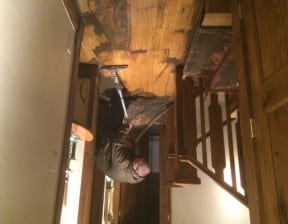What Is Water Damage Restoration?
Water damage restoration is the process to restore water damage done to property back to its pre-loss condition. The United States does not currently dictate procedures; however, there are two certifying bodies that recommend a set standard of care; the Institute of Inspection Cleaning Certification (IICRC) and Restoration Certification (RIA). Most use the IICRC standards which are based on reliable principles, practical experience and research. A good article on water damage is recently written by Eagle River Water and Sanitation on Vail Daily.
What does the IICRC Provide?
The IICRC is a certification and Standards Developing Organization (SDO) non-profit organization for the inspection, cleaning and restoration industries. The IICRC uses a set of specific practical standards for water damage restoration. They do not teach water damage restoration procedures, they provide the foundation and basic principles of how to restore property. They use the standard procedure, S500 which includes gathering information from reliable sources, getting extensive consultations and having practical experience from chemical formulators and equipment manufactures. Those who use the S500 procedures must follow all rules and regulations of a country including; state, federal, provincial or local laws. These laws may dictate who can perform water restoration damage and who is allowed to authorize remediation procedures.
Who Assesses and Evaluates Damages?
A professional water damage restoration company documents the items that have been damaged or affected by water. They will then refer to an industry standard pricing guide to estimate the value of the items lost. The services provided by the company include; inspecting the affected area with equipment designed to detect water, determine the source of the damage and what the extent of damage is. They would then sanitize the structure and any affected areas or cross contaminated areas by: * Deodorizing all affected materials * Utilizing air movers * Utilizing air scrubbers * Placing dehumidifiers in affected areas * Apply wood floor drying techniques * Apply sub floor drying techniques The time to complete this process is generally three to four days. Once the process is complete it is necessary to reevaluate the area to monitor how the drying process worked and determine if any additional is needed.
What are the Categories of Water Damage?
Water damage under the IICRC’s S500 standards are listed under three different categories:
Category One
– (Palatable) This is damage occurring from sanitary or clean water. This can from broken pipes, clean toilet bowl water, faucets or bottled water. Even though the damage may have come from sanitary water, the damage can soon degrade into category two or three if not addressed quickly.
Category Two
– (Non-Palatable) This is water damage from water containing some level of contaminants. This could include water from; washing machines, toilet overflow, dishwasher overflow etc. These waters contain some form of contaminate that could result in illnesses or discomforts. This level can also degrade into category three rapidly if not addressed immediately.
Category Three
– (Toxic) This is the most unsanitary water damage possible and could cause severe illness or even death. Other names for this is “black water” damage and includes water from; sewers, flooding rivers or streams, water from beyond the trap in a toilet, water from toilet with feces inside, wind driven water and water that has been standing and includes microbial growth. Another type of water damage which can occur is that from pipes freezing during cold winter months. Losses in this area are significant every year and are second only to hurricanes in the amount of damages they result in. Insurance companies often leave the expense to the homeowners to restore water damage which has occurred due to freezing pipes as they do not recognize these situations as “catastrophe.”

